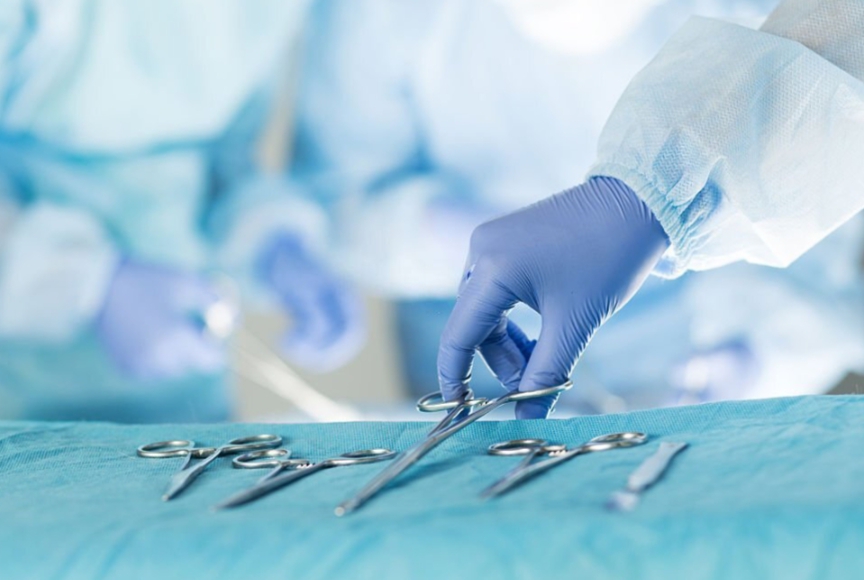
Precision and control in surgical procedures are important, and a surgeon would never like to compromise on any of these two factors.
And when it comes to stitching, they must use the right instruments, high-quality needle holders.
The primary purpose of this instrument is to place sutures effectively for stitching wounds and incisions.
This guide will explain briefly about the needle driving surgical instruments.
Let’s explore!
The Importance of Needle Holders
Surgeons can handle needles properly by using precision-crafted needle drivers.
This tool holds the needles tightly, ensuring they do not slip away during suturing.
Quick suturing with less complications is only possible if surgeons use the most appropriate needle holder.
Types of Needle Drivers/Holders
Several types of needle holders are used in surgical procedures, each designed for specific tasks:
Mayo-Hegar Needle Holders
-
- Used in various surgical procedures
- Known for its robust design and versatility
Crile-Wood Needle Holders
-
- These feature delicate, cross-serrated jaws
- Ideal for delicate suturing and is often used in cardiovascular and plastic surgery.
Olsen-Hegar Needle Holders
-
- Combined needle holder with scissors.
- Allows surgeons to cut sutures without needing a separate instrument.
Castroviejo Needle Holders
-
- Used primarily in microsurgery and ophthalmic surgery
- Known for their fine tips and precise control
How to Choose the Right Needle Holder
Selecting the appropriate needle drivers depends on several factors:
- Type of Surgery
Different surgeries require different levels of precision and control.
- Needle Size
Smaller needles necessitate holders with finer tips.
- Surgeon’s Preference
Personal comfort and familiarity with the instrument play a significant role.
Maintaining Needle Holders
The needle drivers need to be properly maintained to ensure they last long and work well.
- Cleaning
To prevent infection, these holders should be sterilized after every use.
- Inspection
Ensure the locking mechanism and serrations are in their optimal condition by regularly checking them against wear and scratches.
- Lubrication
For the sake of the smooth working of the instrument’s joints, it is advisable to apply an appropriate lubricant to surgical instruments.
The Role of Needle Drivers in Surgical Procedures
In different types of surgical operations, surgeons require these holders that are unique for those operations.
The following are some of the surgeries listed:
- General Surgery
In general surgery, a needle holder is used for closing incisions and suturing tissues.
- Cardiovascular Surgery
In this surgery, needle holder surgical instruments are essential for the delicate suturing of blood vessels.
- Orthopedic Surgery
Needle drivers with thick sutures assist in suturing the tendons and ligaments.
- Plastic Surgery
In plastic surgery, precision surgical needle holders ensure the aesthetics of cosmetic and reconstructive procedures.
To Conclude!
In conclusion, needle holders are vital instruments in the surgical toolkit, providing the precision, control, and efficiency needed for wounds and incision suturing.
Whether a general procedure or a specialized surgery, the right needle holder can make a significant difference.
GerMedUSA is committed to delivering high-quality surgical instruments, including all types of surgical needle drivers.
They have been manufacturing and supplying surgical instruments for over the past three decades.
Check their catalogue now and meet all your needs for medical-grade German stainless surgical instruments.
FAQs
How to clean needle holders effectively?
Soak them in an enzymatic detergent solution or one with a neutral pH level. If available, utilize an ultrasonic cleaner to ensure a thorough clean, especially in hard-to-reach areas. Perform a careful inspection before sterilization to guarantee they are ready for safe use.
Typically, what are the types of needle drivers?
There are various types of needle holders. However, the four most common are Mayo-Hegar, Crile-Wood, Olsen-Hegar, and Castroviejo. Each serves different surgical tasks and levels of precision.
